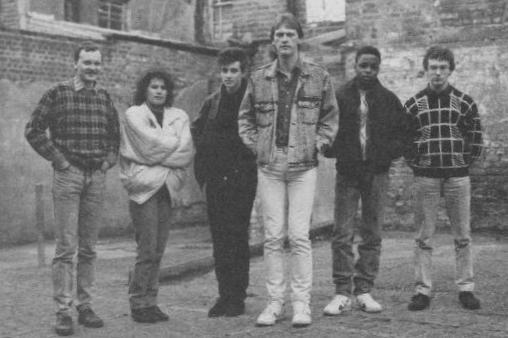Virgin's in-house development team consists of six people. Some of you may find this odd ... The team consists of Alex Martin, Nicole Baikaloff, Martin Wheeler, Dave Chapman, David George and Andy Green.
Alex Martin: Worked for Big Al Sugar himself but escaped - now does graphics and game design
Nicole Baikaloff: Ex-Software Projects — a graphics specialist
Martin Wheeler: One of the original Gang members, “a talented little sod,” specialising in graphics and game design
Dave Chapman: Left the dole to become one of the most well known of Gang members, and codes just about everything
Andy George: Ex-Orpheus (remember them?) a programmer so young it makes you sick.
David Green: Is the newest team member and spends all day playing games. “He can complete a difficult arcade game in the time it takes an average reviewer to find a pencil.” (Wot, only one)?
GANG OF SIX – 1988
Began in 1984 with a conversion of Sorcery by Martin Wheeler. Next game Strangeloop, a very highly rated arcade game, and a number of other programs until Dan Dare — Pilot of the Future finally brought the team the success. Action Force used the sophisticated graphics developed in Dan in a game licence which many said was far better than the little plastic toys deserved ... CPCrulez[Content Management System] v8.732-desktop/c
Page créée en 216 millisecondes et consultée 270 foisL'Amstrad CPC est une machine 8 bits à base d'un Z80 à 4MHz. Le premier de la gamme fut le CPC 464 en 1984, équipé d'un lecteur de cassettes intégré il se plaçait en concurrent du Commodore C64 beaucoup plus compliqué à utiliser et plus cher. Ce fut un réel succès et sorti cette même années le CPC 664 équipé d'un lecteur de disquettes trois pouces intégré. Sa vie fut de courte durée puisqu'en 1985 il fut remplacé par le CPC 6128 qui était plus compact, plus soigné et surtout qui avait 128Ko de RAM au lieu de 64Ko. |
|

